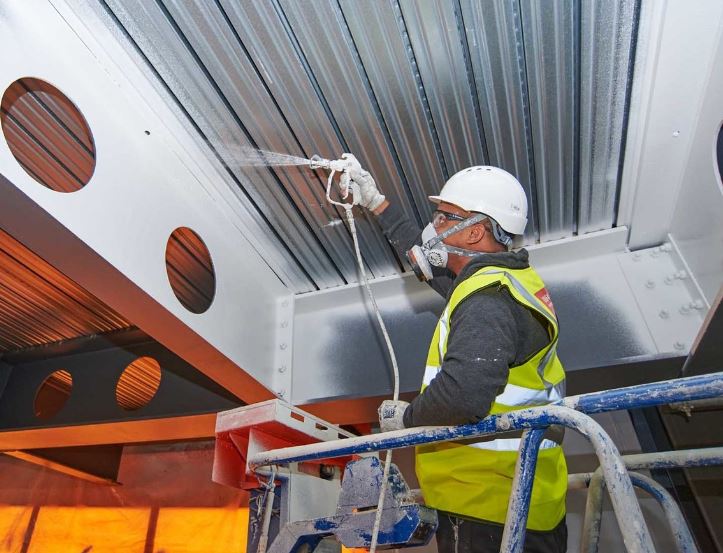If you’re looking to improve the fire safety of your building, then you might want to consider fire resistant coating such as an intumescent paint. In particular, intumescent paint can protect various surfaces from fire damage.
In this blog, we’ll explore how intumescent paint works and how it protects surfaces from fire. So, without further ado, let’s dive right into it!
What Is Intumescent Paint?
Firstly, let’s define what intumescent paint is – it is a form of paint that is referred to as a ‘reactive paint’. In essence, intumescent paint swells up multiple times (up to 50 times) its original thickness when it is exposed to high temperatures (over 120 degrees celsius), such as in the event of a fire. It forms a carbon layer (also known as char) which acts as a thermally insulating layer over the material that it’s over, usually for a certain period of time, ranging from 30 to 120 minutes.
Which Surfaces Can You Use Intumescent Paint On?
Intumescent paint can be used on a wide range of surfaces to help protect the surface, as well as preventing the fire from spreading too quickly and delaying strcuctral failure – allowing adequate time for people inside the building to evacuate. Intumescent paint can be used on the following surfaces:
- Steel – this material is an excellent conductor of heat, which is why it’s important to use intumescent paint for unprotected steelworks; structural steelworks in particular can be vulnerable to collapse if exposed to extremely high temperatures
- Wood – intumescent paint on timber can greatly reduce the spread of surface flames; with many homes and buildings also involving timber frames, using intumescent paint on wood is a good idea to improve the fire performance of timber
- Plaster – while the fire performance of plasterboard walls/ceilings is generally considered to be adequate (20 minutes in good condition), it can be increased through the use of intumescent paint
At Passive Fire Installations Limited, we can use fire resistant coating like intumescent paint on a number of different surfaces on your commercial or residential building. This will help protect your premises, minimising fire damage and improving the safety of inhabitants should a fire occur within the building. For more information, get in touch with us today.
